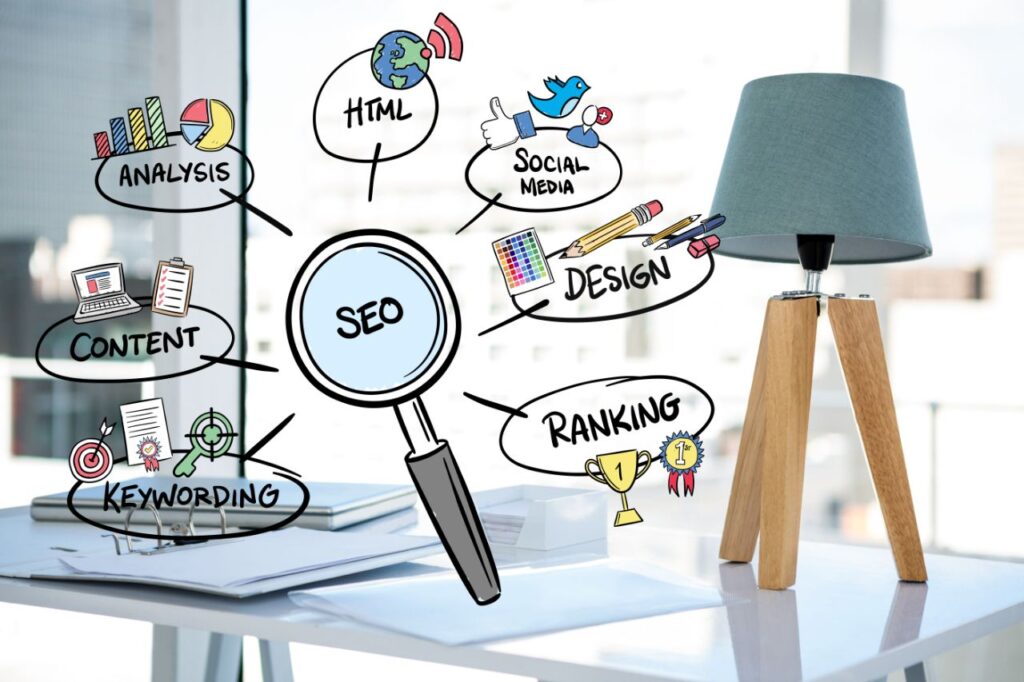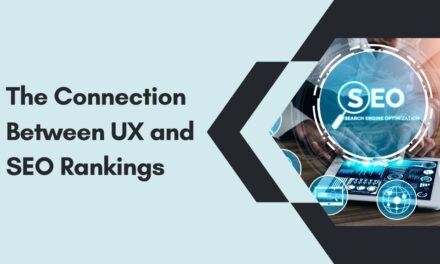SEO remains an essential strategy for businesses aiming to improve their online presence and attract natural traffic in the constantly changing world of digital marketing. With search engines becoming more advanced, old SEO techniques are no longer effective. The upcoming SEO trends rely on utilizing predictive analytics for forecasting future trends, a strategy that helps businesses anticipate changes and maintain a competitive edge. Lets know more about future of seo.
Understanding Predictive Analytics in SEO
Predictive analytics is a method that uses historical data, statistical algorithms, and machine learning to predict future outcomes. When applied to SEO, it means analyzing past search behavior, trends, and search engine algorithm updates to forecast future search engine trends and user preferences. This approach empowers businesses to create proactive SEO strategies that align with anticipated changes, ensuring that their content remains relevant and effective.
Accurate forecasts in predictive analytics depend on the use of extensive data sets. By analyzing search trends spanning multiple years, one can forecast the potential rise or fall in popularity of certain keywords. Furthermore, analyzing user behavior data like bounce rates and click-through rates can offer valuable insights into how users will potentially interact with content in the future. Businesses can enhance their websites and content by recognizing these patterns to cater to a constantly evolving audience.
In essence, predictive analytics allows businesses to be one step ahead. Instead of reacting to changes after they occur, companies can forecast and implement strategies that keep them at the forefront of search engine results. This is particularly important in the competitive world of digital marketing, where the ability to anticipate trends can make a significant difference in performance.
The Evolution of SEO: From Keywords to Predictive Analytics
SEO has come a long way since its inception. In the early days, the focus was on keyword optimization, where stuffing a page with as many relevant keywords as possible was the key to ranking high in search results. However, as search engines like Google evolved, they began to prioritize user intent and content quality over sheer keyword density. This shift marked a significant evolution in SEO strategies, emphasizing the importance of creating content that truly answers users’ queries.
The next phase of SEO evolution was the emphasis on user experience. Search engines started to consider factors such as page load speed, mobile-friendliness, and overall content quality. This led to a more holistic approach to SEO, where the entire user experience was optimized, not just the content itself. As search engine algorithms became more advanced, businesses had to adapt quickly or risk falling behind.
The newest development in SEO involves incorporating predictive analytics. This method looks ahead of changes instead of just responding to them. Through the use of data-driven analysis, businesses can create proactive SEO strategies instead of reactive ones. This represents a major change in the way companies handle digital marketing, necessitating a greater grasp of data and the skill to predict trends. Businesses must prepare for the significant changes that predictive analytics will bring to the SEO industry and incorporate this innovative technology into their strategies.

Implementing Predictive Analytics in Your SEO Strategy
Incorporating predictive analytics into your SEO strategy can seem daunting, but it becomes manageable when broken down into clear steps:
Data Collection: The foundation of predictive analytics is data. Businesses need to collect comprehensive data on user behavior, search trends, and website performance. This includes metrics like click-through rates, bounce rates, conversion rates, and even social media engagement. The more data you have, the more accurate your predictions will be.
Data Analysis: After collecting the data, the next stage involves analyzing it. This includes utilizing analytical instruments to discover patterns and connections. For instance, if you observe that a certain keyword consistently does well in a particular season, you can plan your content strategy accordingly. Examining data can also uncover information about user preferences, which can guide your efforts in creating content.
Trend Forecasting: This is where predictive analytics comes into play. By applying predictive models, you can anticipate future search trends and user behavior. Machine learning algorithms can analyze vast amounts of data to identify patterns that may not be immediately apparent. This enables businesses to adjust their SEO strategies proactively, ensuring they stay ahead of the competition.
Strategy Adjustment: The final step is to implement the insights gained from your data analysis and trend forecasting. This might involve optimizing existing content, creating new content that targets emerging keywords, or improving the overall user experience on your website. The key is to remain agile and be willing to adapt your strategy as new data becomes available.
Implementing predictive analytics requires an investment in both time and resources, but the benefits far outweigh the costs. Businesses that successfully incorporate this approach into their SEO strategy will be better positioned to navigate the ever-changing digital landscape.
Benefits of Predictive Analytics in SEO
The advantages of integrating predictive analytics into your SEO strategy are numerous and impactful:
Proactive Adaptation: One of the most significant benefits is the ability to adapt proactively. Instead of scrambling to adjust your strategy after an algorithm update, predictive analytics allows you to anticipate changes and prepare accordingly. This proactive approach ensures that your content remains relevant and competitive, even as search engine trends evolve.
Enhanced User Experience: By understanding future user behavior, businesses can create content that meets evolving needs. For example, if predictive analytics indicates a growing interest in a specific topic, you can develop content that addresses that interest before your competitors do. This not only improves user satisfaction but also increases the likelihood of higher search rankings.
Resource Optimization: SEO demands a considerable amount of time and resources. Predictive analytics aids in the more efficient distribution of resources by concentrating efforts on key areas of impact. Instead of focusing on strategies that might not work, businesses can prioritize initiatives that are more likely to be successful using data-driven insights.
Competitive Advantage: Staying ahead of the competition is crucial in digital marketing. Businesses that leverage predictive analytics will have a distinct advantage over those that do not. By anticipating trends and adapting strategies proactively, companies can maintain a strong presence in search engine results, even in a highly competitive market.
Challenges in Utilizing Predictive Analytics for SEO
Despite its benefits, implementing predictive analytics in SEO is not without its challenges:
Data Quality: The accuracy of predictive analytics depends on the quality of the data being used. Incomplete or inaccurate data can lead to faulty predictions, which can be costly for businesses. Ensuring that you have high-quality, comprehensive data is essential for successful implementation.
Complexity: Developing and interpreting predictive models can be complex. It often requires specialized knowledge and tools, which can be a barrier for smaller businesses with limited resources. However, as technology advances, more user-friendly solutions are becoming available, making predictive analytics more accessible.
Dynamic Environment: The digital environment is always evolving, so predictive models need frequent updating to stay relevant. This implies that companies must remain alert and ready to adapt their strategies with the emergence of new information. It is a constantly evolving process that necessitates ongoing focus and improvement.
Cost: Implementing predictive analytics can be expensive, especially for small to medium-sized businesses. The cost of data collection tools, analytical software, and skilled personnel can add up. However, the long-term benefits of staying ahead in the SEO game often justify the investment.

Future Trends in SEO and Predictive Analytics
Looking ahead, several trends are poised to shape the future of SEO and predictive analytics:
Artificial Intelligence Integration: Artificial intelligence will play a more significant role in analyzing data and generating insights. AI-powered tools can process vast amounts of data quickly and accurately, making predictions more reliable. As AI technology advances, we can expect even more sophisticated predictive analytics capabilities.
Voice Search Optimization: As voice-activated devices such as Amazon Alexa and Google Home become more popular, optimizing for voice search is becoming more crucial. Businesses can use predictive analytics to comprehend the evolution of voice search trends and adapt their content in response. This will be essential for ensuring visibility as more users start using voice search for their inquiries.
Personalization: Users increasingly expect personalized content that caters to their specific needs and preferences. Predictive analytics will enable businesses to create highly personalized experiences by analyzing user data and forecasting what content will resonate most with their audience. This level of customization will be a key differentiator in the future of SEO.
Mobile-First Indexing: As mobile internet usage continues to rise, search engines are prioritizing mobile-friendly content. Predictive analytics can help businesses forecast mobile search trends and optimize their content for mobile users. This will be essential for maintaining high search rankings in a mobile-first world.
Conclusion
The fate of SEO is unquestionably connected with predictive analytics and forecasting trends. As search engine algorithms evolve, businesses need to adjust their tactics to remain competitive. By recognizing and predicting shifts in search engine patterns and user actions, businesses can create better, forward-thinking SEO tactics that set them apart in the online market.
Mastering predictive analytics requires an investment of time, resources, and a willingness to embrace new technologies. However, the potential rewards are significant. Businesses that can successfully navigate the complexities of predictive SEO will be well-positioned to thrive in the ever-changing digital landscape.
Whether you are a small business owner or a digital marketing professional, the time to start embracing predictive analytics is now. By staying ahead of the curve, you can ensure that your SEO efforts remain effective and that your business continues to grow in the face of new challenges and opportunities.












